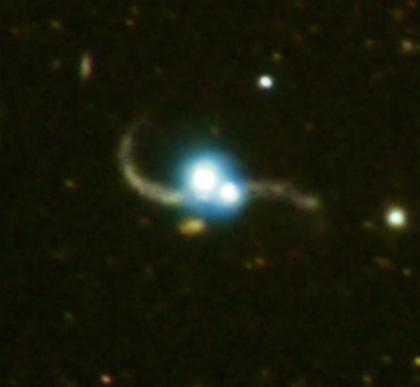This optical image of SDSS J1254+0846 obtained May 22, 2009 on the IMACS camera at the Magellan/Baade telescope at Las Campanas Observatory in Chile shows the two bright quasar nuclei as well as the tidal arms of the host galaxy merger. Scale bar is 10 arcseconds.
* Astronomy

| Post Info | TOPIC: SDSS J125454.87+084652.1 | ||||||
|---|---|---|---|---|---|---|---|
|
|
|
||||||
|
|
|
||||||
|
|
|
||||||
|
|
|
||||||
|
|
|
||||||
|
|||||||
|
|
||



